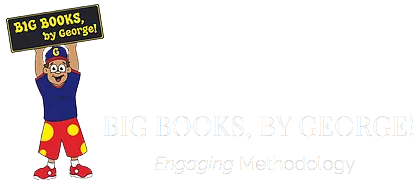How Cognitive Learning Theory Can Help You Understand Memory and Recall
Do you want to really understand how people learn and behave? Cognitive learning theory is a powerful, researched-based tool that provides insight into the way humans take in information, process it and make decisions. By understanding cognitive theories, you can maximize your potential for success as a student, learner or mentor. In this blog post, we’ll explore five of the most influential cognitive learning theories from Piaget’s constructivism to Bruner’s spiral curriculum, and discuss how each of them can be used effectively in an educational setting. So whether you’re looking to gain insight into yourself or those around you, these five cognitive theories will help guide your journey.
Definition of Cognitive Learning Theory
Have you ever wondered how we process and retain information? That’s exactly where cognitive learning theory comes into play. It’s the study of how our brain encodes, organizes and retrieves information. Essentially, it is the way in which we learn and remember.
Cognitive learning theory suggests that learning occurs by actively engaging with the material being taught, instead of simply observing it. This means that we need to process the information and find ways to relate it to our existing knowledge.
By doing so, we create connections and strengthen our understanding, making the learning process more effective. Understanding cognitive learning theory can make a huge impact on how we approach education and retain knowledge for the long term.
1. Piaget’s Constructivism
This cognitive learning theory proposes that learners actively construct their own knowledge through their interactions and experiences. Through observation, trial and error, and exploration, learners develop an understanding of the world around them and build upon it as they gain new information.
As a teacher or mentor, you can use this theory by providing an environment that encourages exploration and discovery. Ask open-ended questions, provide various resources and support learners as they make connections between their current knowledge and the new information they’re exploring.
2. Vygotsky’s Social Learning Theory
This cognitive theory states that learning takes place in a social context, where people learn from each other through collaboration and exchange.
You can use this theory to create an environment where learners are encouraged to work together and share their knowledge with one another by working on projects, discussing topics or engaging in debates. By doing so, you foster a learning community that is engaged and actively involved in the process of learning.
3. Bruner’s Spiral Curriculum
Bruner’s cognitive learning theory proposes that learners should progress through levels of increasingly complex concepts in order to gain a deeper understanding of each topic.
As a teacher or mentor, you can incorporate this theory into your lesson plans by gradually introducing new concepts, allowing for practice and repetition before advancing further into the material. This ensures that all students have access to foundational knowledge before exploring more advanced topics.
4. Bandura’s Social Cognitive Theory
This cognitive learning theory states that learners are actively engaged in the process of learning and that their behavior is shaped by observing and imitating others.
To make use of this theory in your teaching, create opportunities for students to observe successful techniques used by experienced peers or mentors. Once they have seen what works, you can then provide them with the opportunity to practice and apply those techniques on their own.
5. Ausubel’s Meaningful Learning Theory
This cognitive learning theory suggests that new information should be related to prior knowledge for meaningful learning to take place.
As a teacher or mentor, you can use this theory by providing context for each lesson and linking it back to previously acquired knowledge. This allows your students to form connections between their current understanding and the new material, making it easier for them to comprehend and recall key concepts.
How to use cognitive theory in your classroom
Using cognitive learning theory in the classroom can be a great way to engage students and help them retain knowledge. Non-fiction books for beginners are an excellent resource for providing context, building connections between concepts, and actively engaging and processing information in order to retain it.
For beginners, it’s important to start with books that are written at a level appropriate for their understanding as this will help them to better comprehend and remember the material. Once they have a good foundation, they can move on to more advanced books that explore topics in greater depth.
Readers should be asking questions, making connections between the material and their prior knowledge, and exploring different perspectives. Through reading non-fiction books, students are able to gain a deeper understanding of their chosen subject and develop lasting knowledge that they can utilize for years to come.
Cognitive learning theory provides teachers and mentors with a valuable tool for helping their students learn effectively. By creating an environment that encourages collaboration, meaningful connections between concepts, and active engagement in the process of learning, educators can ensure that their lessons are retained by each student. Non-fiction books are an especially useful resource for providing context and helping students to gain a deeper understanding of their chosen subject. Utilizing cognitive learning theory in the classroom can provide students with an invaluable opportunity for long-lasting knowledge acquisition.
